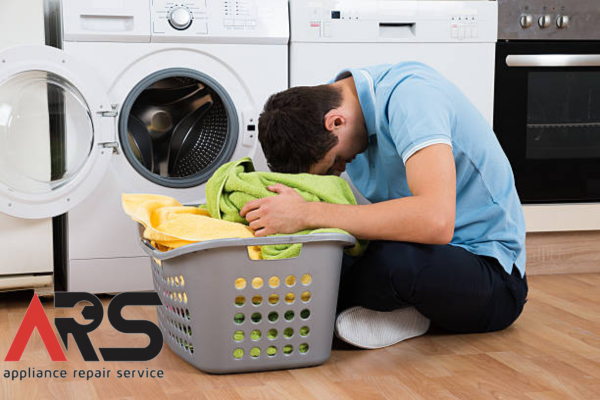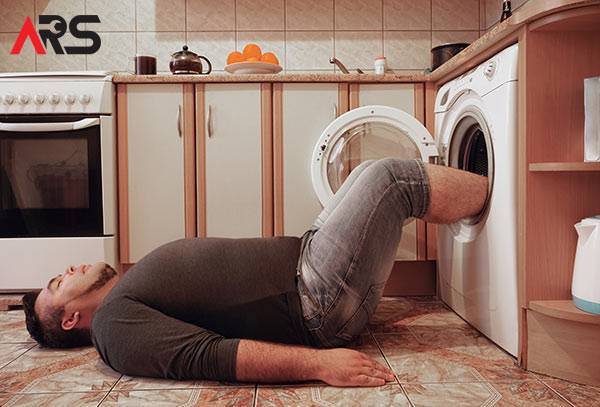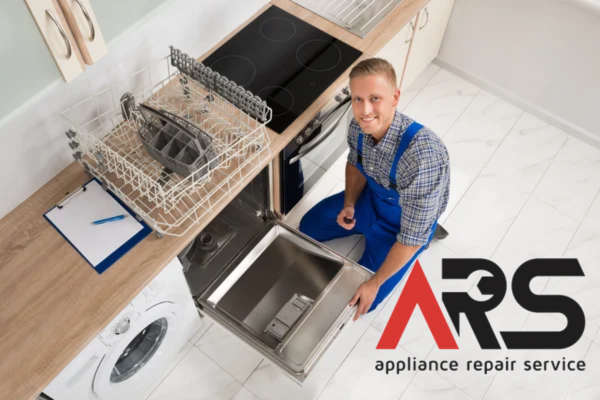Diagnosing and Fixing Common Dishwasher Drainage Issues

Dishwasher Drainage
Welcome to the ARS Appliance Repair Services blog, your go-to resource for all things appliance-related. If you’re reading this, chances are you’re facing a frustrating dilemma: your dishwasher won’t drain properly. Don’t worry; you’re not alone. Dishwasher drainage issues are among the most common problems homeowners encounter, but the good news is that they are often fixable with a little troubleshooting.
In this comprehensive guide, we’ll walk you through the steps to diagnose and resolve the most common reasons why your dishwasher may not be draining properly. From simple fixes you can try at home to when it’s time to call in the professionals, we’ve got you covered. Let’s dive in.
Understanding the Importance of Proper Dishwasher Drainage
Before we delve into troubleshooting tips, it’s essential to understand why proper dishwasher drainage is crucial for the functionality of your appliance and the cleanliness of your dishes. A dishwasher that doesn’t drain efficiently can lead to several problems:
Residue Build-Up
When water sits stagnant in the bottom of your dishwasher, it can become a breeding ground for bacteria and mold. This can result in unpleasant odors and residue buildup on your dishes, rendering them unclean even after a wash cycle.
Damage to the Appliance
Continued use of a dishwasher with drainage issues can put additional strain on its components, leading to premature wear and tear. Over time, this can result in costly repairs or the need for a full appliance replacement.
Water Damage
In severe cases, a malfunctioning dishwasher can cause water damage to your kitchen floors and cabinets. Standing water around the appliance can seep into the surrounding areas, causing structural damage and promoting the growth of mold and mildew.
Common Reasons Why Your Dishwasher Won’t Drain
Now that we’ve established the importance of proper drainage let’s explore some of the common reasons why your dishwasher may be failing to drain water effectively:
Clogged Drain Filter
One of the most frequent culprits behind dishwasher drainage issues is a clogged drain filter. The drain filter prevents food particles and debris from entering the dishwasher’s drain pump. Over time, however, it can become clogged with food scraps, grease, and other residues, inhibiting proper water flow.
Blocked Drain Hose
A blocked drain hose is another common cause of drainage problems. The drain hose is responsible for carrying wastewater from the dishwasher to the drainage system. If it becomes kinked, twisted, or obstructed by debris, water may not be able to flow freely, resulting in standing water in the bottom of the dishwasher.
Faulty Drain Pump
The drain pump plays a vital role in expelling water from the dishwasher during the drainage cycle. If the pump is malfunctioning or defective, it may fail to effectively remove water from the appliance, leaving dishes soaking wet at the end of the wash cycle.
In the next sections, we’ll provide step-by-step instructions for diagnosing and addressing each of these issues, helping you get your dishwasher back up and running in no time. Stay tuned for expert tips and practical solutions from the team at ARS Appliance Repair Services.
Once you’ve resolved the drainage problem with your dishwasher, it’s essential to implement preventative maintenance measures to avoid encountering similar issues in the future. By taking proactive steps to keep your dishwasher in optimal condition, you can prolong its lifespan and ensure consistent performance. Here are some preventative maintenance tips to consider:
Regularly Clean the Drain Filter
Make it a habit to clean the dishwasher’s drain filter at least once a month to prevent the buildup of food particles and debris. Regular maintenance will help ensure proper water flow and drainage, reducing the risk of clogs and drainage issues.
Run Hot Water Before Starting a Wash Cycle
Before starting a wash cycle, run hot water in your kitchen sink until it reaches its maximum temperature. This helps preheat the dishwasher and dissolve any grease or food residues that may be clinging to dishes and utensils, improving the effectiveness of the wash cycle and reducing strain on the drain pump.
Use Dishwasher-Safe Cleaning Products
When cleaning your dishwasher, avoid using harsh or abrasive cleaning agents that can damage internal components. Instead, opt for dishwasher-safe cleaning products specifically formulated for removing limescale, grease, and mineral deposits. Regular cleaning will help maintain optimal dishwasher performance and prevent drainage issues.
Inspect and Maintain the Drain Hose
Periodically inspect the dishwasher’s drain hose for signs of wear, damage, or deterioration. Replace the hose if you notice any cracks, leaks, or weak spots that could compromise its integrity. Additionally, ensure the hose is properly secured and free of obstructions to facilitate proper water drainage.
Schedule Professional Maintenance Checks
Consider scheduling regular maintenance checks with a professional appliance repair technician to keep your dishwasher in top condition. A qualified technician can inspect the appliance for any potential issues, clean internal components, and perform necessary repairs or adjustments to prevent future problems.
By following these preventative maintenance tips, you can minimize the risk of encountering drainage issues with your dishwasher and enjoy hassle-free operation for years to come. Remember, proactive maintenance is key to preserving the performance and longevity of your appliances.
Conclusion
We hope this guide has been helpful in addressing the frustration of a dishwasher that won’t drain properly. By understanding the importance of proper drainage, diagnosing common issues, and implementing preventative maintenance measures, you can keep your dishwasher running smoothly and efficiently for years to come.
Remember, when faced with a drainage problem that persists despite your best efforts, don’t hesitate to reach out to the professionals at ARS Appliance Repair Services. Our team of experienced technicians is dedicated to providing fast and reliable appliance repair solutions throughout the Greater Toronto Area and Southern Ontario.
For all your dishwasher repair needs and more, trust ARS Appliance Repair Services to deliver exceptional service and results. Contact us today to schedule a service appointment or to learn more about our comprehensive range of appliance repair services.
Thank you for choosing ARS Appliance Repair Services as your trusted appliance repair partner. Stay tuned for more helpful tips, insights, and updates from our team.

ARS Appliance Repair Service has been trusted across Toronto, Ottawa, and Southern Ontario for over a decade. Our licensed, manufacturer-authorized technicians specialize in repairing all major household and commercial appliances with genuine parts and warranty-backed service. From refrigerators and washers to ovens, dishwashers, and more, we restore appliances quickly, professionally, and correctly the first time, earning the confidence of homeowners and businesses throughout the region.





